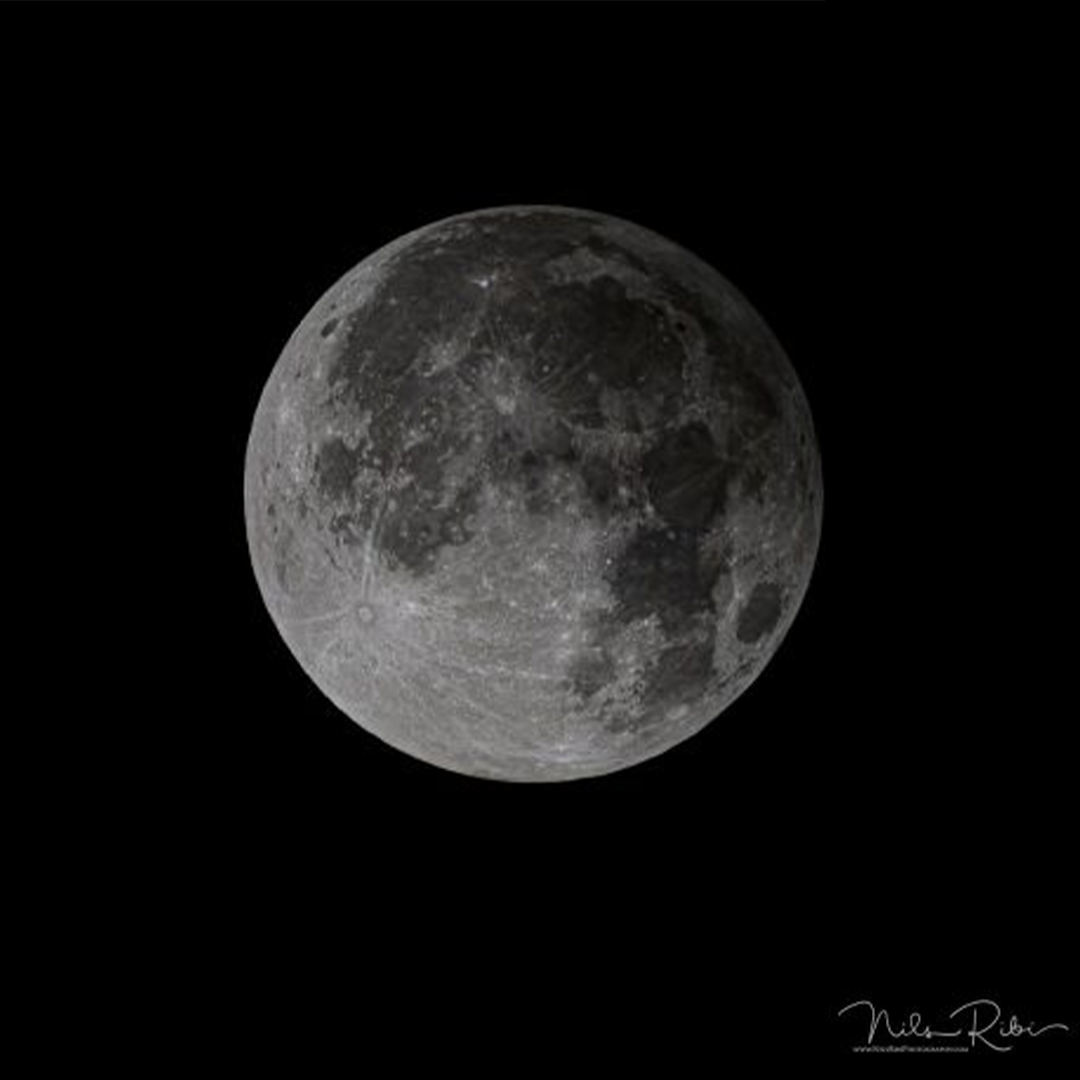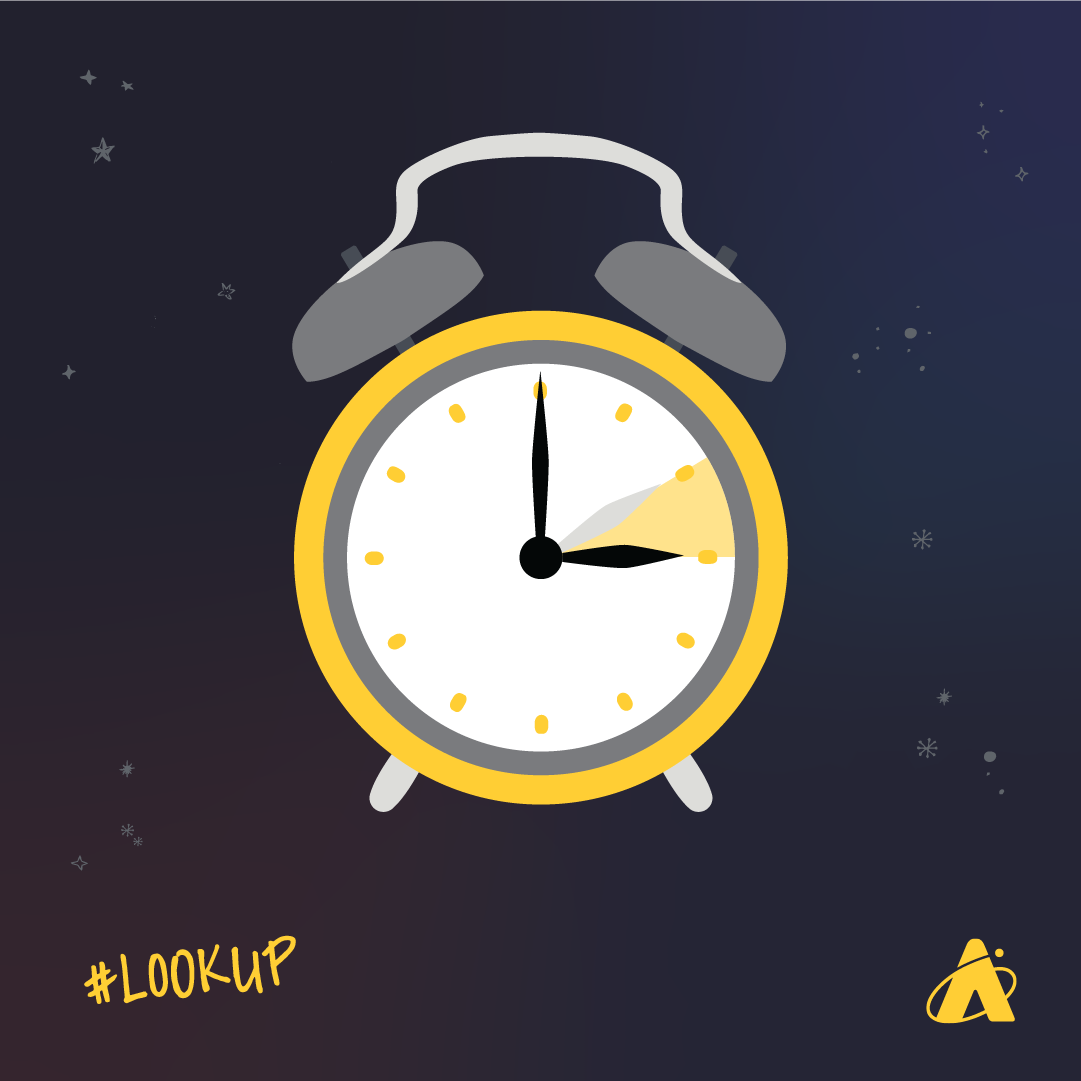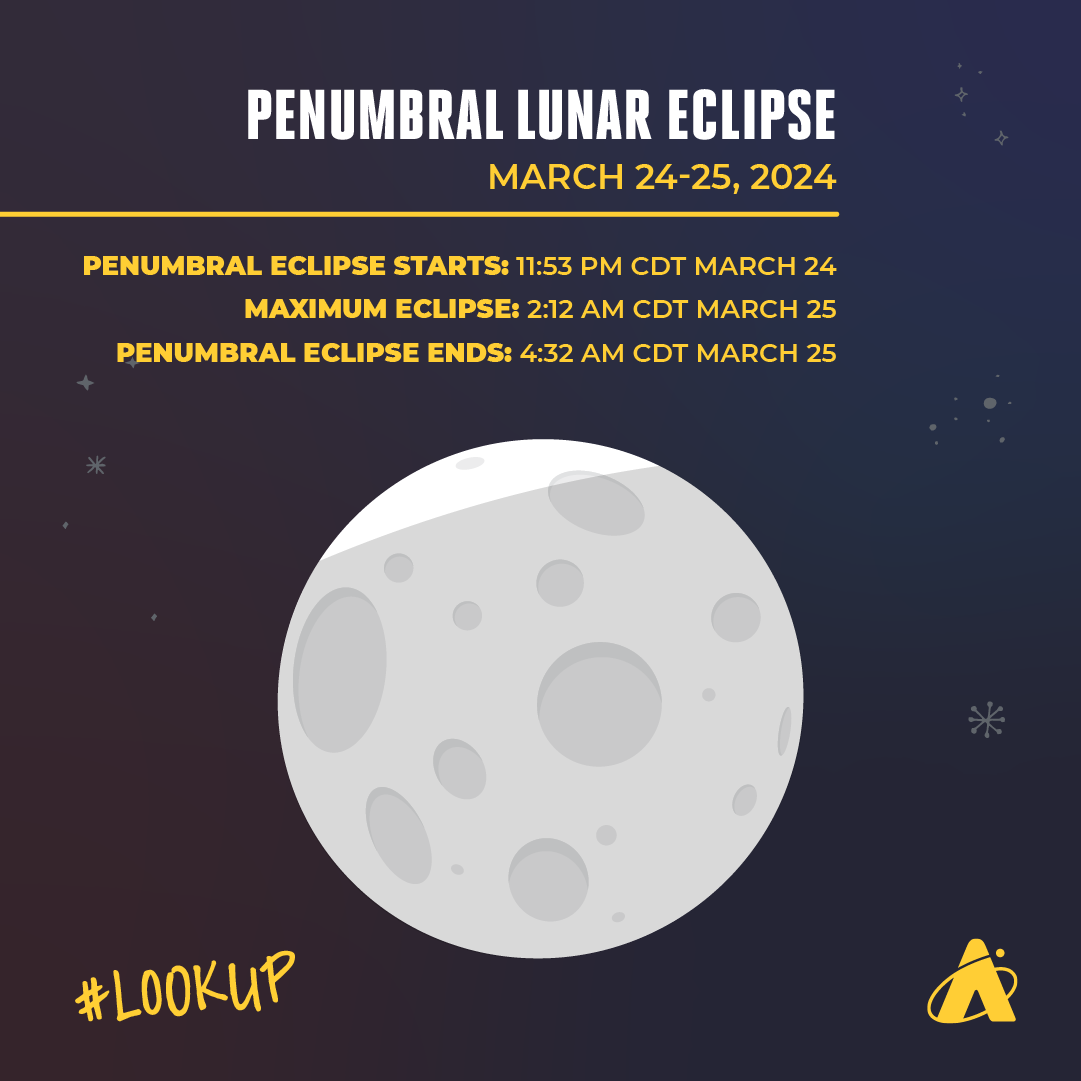Adler Skywatch: March 2024

Header image: the penumbral lunar eclipse as seen in Sun Valley, Idaho, on November 30, 2020. Image credit: Nils Ribi via Earthsky.org, edited by the Adler Planetarium.
Daylight Saving Time begins, spring arrives, Mercury comes out of hiding, and our evening sky prepares for the April 8 solar eclipse with a penumbral lunar eclipse at the end of the month. Check out what’s up in the March 2024 sky!
Time For A Time Change

Daylight Saving Time starts at 2:00 am on March 10 this year. Clocks get set one hour ahead (luckily for us, most cell phones change the time for us)! We’ll lose an hour of sleep that morning, but we’ll get it back later this year when Daylight Savings ends on November 3.
Daylight Saving time plays tricks on the timing of sunrise this month. Looking strictly at the clock, the Sun rises about ten minutes later on March 31 than it does on March 1. But in actuality, the Sun has been rising earlier each day since winter started on December 21, 2023. If Daylight Saving Time didn’t move the clocks an hour ahead, the Sun would rise 50 minutes earlier on March 31 than it does on March 1.
The 2024 vernal equinox, which marks the start of spring in the northern hemisphere, occurs on March 19, at 10:06 pm Central Daylight time (CDT). The past three years, the vernal equinox fell on March 20. However, in 2020, it also fell on March 19. A major factor in this earlier start date is that both 2020 and 2024 are leap years!

Planet Spotting
From March 15–31, try to see the usually hard-to-spot planet Mercury. It’s both the smallest planet and the planet closest to the Sun, so it’s often invisible due to the Sun’s glaring brightness. But this month, Mercury’s apparent distance from the Sun becomes just far enough away to catch a glimpse of the planet.
Start looking about 40 minutes after sunset. You’ll need a clear sight-line to the west to see it since it will be only about 7–10 degrees above the horizon. As each evening passes, it gets slightly dimmer—particularly after March 25. By the end of the month, Mercury is dimmer than a first magnitude star. Don’t get it confused with the brighter planet Jupiter, which is only about 20 degrees up and to the left of Mercury.
Jupiter’s brightness makes it highly visible—even in comparison to any bright stars near it. At the start of the month, it’s about 60 degrees high in the southwest sky during twilight. Each evening, the planet inches closer to the Sun, it appears only about 30 degrees above the edge of the solar disk by the end of March. It sets in the west-northwest around 10:30 pm Central Standard Time at the start of the month, and around 10:00 pm Central Daylight Time at the end of the month.
The evening of March 13, Jupiter appears less than two degrees to the left of a very slim waxing crescent Moon. The next evening, March 14, the tiny but twinkly Pleiades star cluster appears to nearly sit on top of the crescent Moon’s dark edge! During the evening of March 18, the Moon will be just below Pollux, the brightest star in the constellation Gemini.
March Mornings
In the mornings, the brightest planet, Venus, will be very low in the east-southeast sky shortly before sunrise. You’ll need a clear sight-line to the horizon and probably something to block the glare of the rising Sun to see it—for example, a tree or the edge of a building. As the Sun rises earlier each day in March, it’s best to try looking for Venus earlier in the month.
What you most likely will not see in March is the much fainter planet Mars, which is positioned slightly above Venus. About mid-month, Saturn begins to move out of dawn’s glare. However, it will be very dim and likely too close to the Sun to see it, so don’t risk your eyesight attempting it! You’ll have better luck viewing Saturn in April.
Eclipses Incoming

Excitement is building for the Great North American Solar Eclipse on April 8, 2024. But did you know that eclipses of the Sun and the Moon come in pairs? When an eclipse of one occurs, an eclipse of the other happens about two weeks before or after. Because the Sun, Moon, and Earth will be in the proper orbital alignment for the solar eclipse to occur during the new Moon, it also means the alignment is right for a lunar eclipse to occur at the full Moon. Curious as to what happens during a solar eclipse? Learn more in our blog, Different Types of Solar Eclipses Explained.
In this case, a penumbral lunar eclipse occurs on the night of March 24 into the morning of March 25. This lunar eclipse is visible for all of North and South America, plus some of western Europe, western Africa, and far-eastern Asia and Australia. Unfortunately, it is not the kind of lunar eclipse that causes an intense color change for the Moon.
The Moon will only pass through some of the Earth’s outer lighter shadow, called the penumbra. The amount of expected color change we’ll see on the Moon is minimal, probably only lightly shading a portion of it to appear a slightly darker gray. Depending on when you look at the eclipse, you may have a tough time even noticing a difference in shading. If you want to stay up to see this eclipse, it will occur from 11:53 pm—4:32 am, with the peak of the eclipse at 2:12 am.
Moon Phases

Last Quarter Moon: March 3
New Moon: March 10
First Quarter Moon: March 16
Full Moon: March 25
Please note: these descriptions are for the Chicago area, using Central time.
Subscribe To Skywatch Wednesday This March!
Tour the sky with the Adler Planetarium’s Theaters Manager, Nick, in Skywatch Wednesday. Nick uses cutting edge visualizations, NASA images, and astrophotography to show you what you can see in the night sky throughout the year.
Check out Nick’s latest episode—AKA your ultimate guide to winter stargazing and planet spotting! Nick explains how to use the Winter Circle to find constellations and stars, and takes a closer look at famous constellations—like Orion, Taurus, and Gemini—and the full Moon.
Learn From Our Astronomy Educators!
Watch exclusive live episodes of Sky Observers Hangout this March! Learn how to observe upcoming cosmic happenings, enhance your astrophotography skills, and see celestial objects through a telescope virtually with our astronomy educators.
In our latest episode, Michelle and Hunter guide you through one of the winter sky’s most famous constellations: Orion the Hunter! Explore why this constellation has intrigued humans for millennia and uncover its stellar mysteries—from belt to Betelgeuse.






